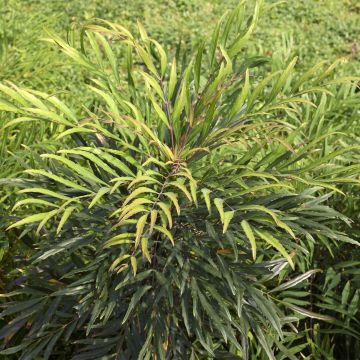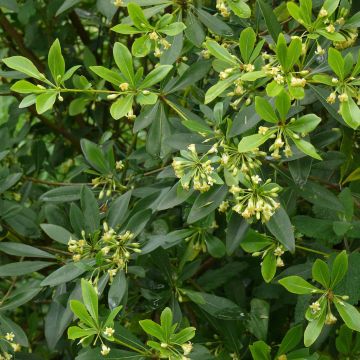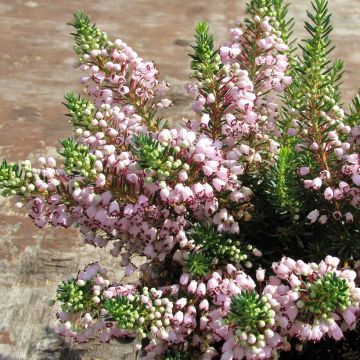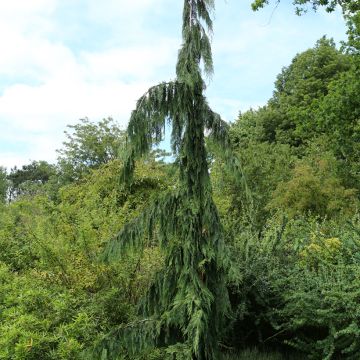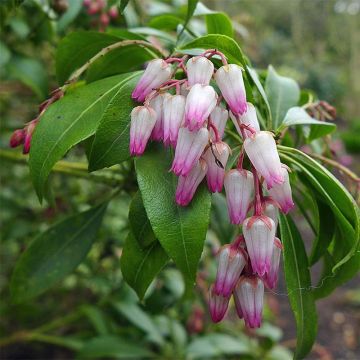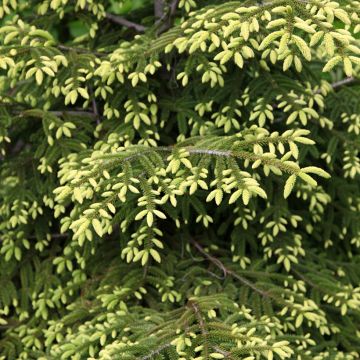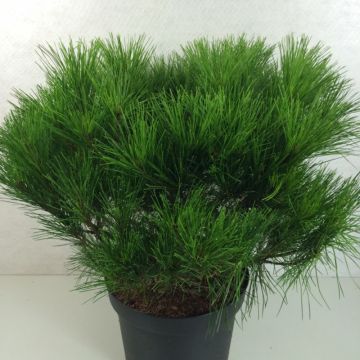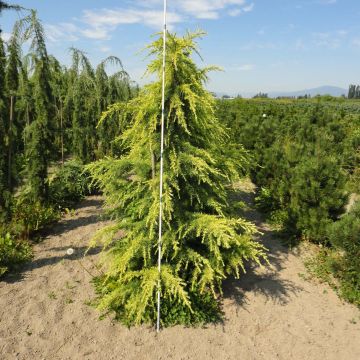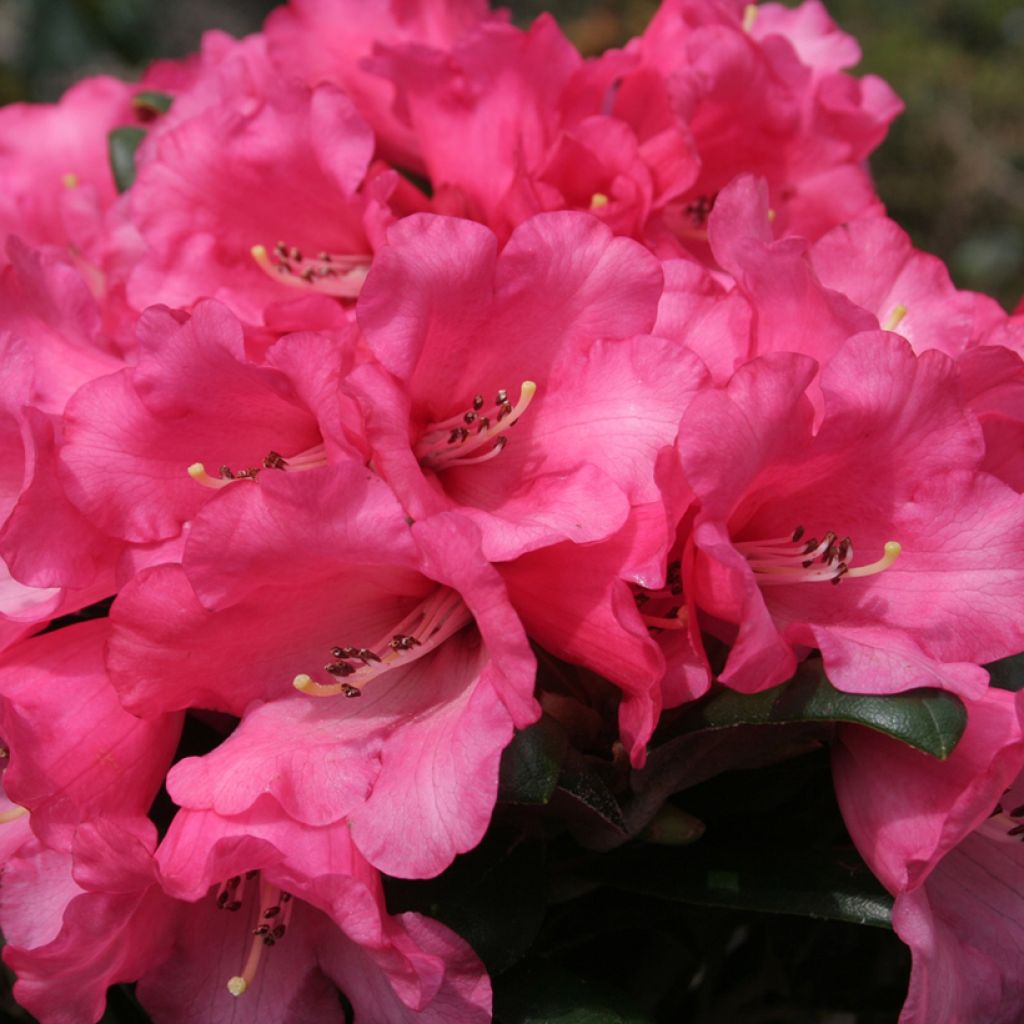

Rhododendron Debbie Dane - Yakushimanum rhododendron
Rhododendron Debbie Dane - Yakushimanum rhododendron
Rhododendron yakushimanum Debbie Dane
Yaku rhododendron, Yakushima rhododendron
Home or relay delivery (depending on size and destination)
Schedule delivery date,
and select date in basket
This plant carries a 24 months recovery warranty
More information
We guarantee the quality of our plants for a full growing cycle, and will replace at our expense any plant that fails to recover under normal climatic and planting conditions.
Does this plant fit my garden?
Set up your Plantfit profile →
Description
Rhododendron 'Debbie Dane' is a compact hybrid with slow growth, ornamental for its foliage and especially for its lush spring flowering, which is eye-catching in the garden. This small shrub forms a dome of vegetation that is wider than it is tall over time and is a reliable choice for small gardens. It can also be grown in a container if alkaline soil prevents its planting in the ground. Preferring partial shade and moisture, this little gem will find its place within a bed of acid soil plants.
Rhododendrons are plants from the Ericaceae family, like Kalmias (Mountain Laurels), Strawberry Trees (Arbutus) or Oxydendrum. Most of these plants require acidic soils to thrive, but some like Erica carnea (Snow Heather) tolerate alkaline conditions. The Rhododendron genus, rich in over 1000 species, is extremely diverse, encompassing dwarf shrubs of 10 to 20 cm in height and small trees reaching 10 to 15 m, from cold and temperate regions to the tropics. Some species form true groups as they have inspired breeders, and the "Yakus" as they are affectionately called by enthusiasts, are easily recognisable by their stocky and compact habit. The species is native to southern Japan, specifically the granite island of Yaku-shima, where it grows at altitudes of 1000 to 1700 m, particularly on Mount Kuromi. With very slow growth, the shrubs reach heights of 80 cm to 2.40 m after many years.
'Debbie Dane' is a horticultural variety obtained in 1977 by breeder Svend Hansen, following a cross-breeding between R. yakushimanum and R. haematodes. It is part of the "Dane" range created by Danish enthusiasts aiming to achieve ornamental foliage, compact growth, and hardiness compatible with the climate of their country. After 10 years of cultivation, this small Rhododendron will form a dome approximately 70 cm high with an 80 cm spread. Its stocky and very dense vegetation consists of leaves measuring up to 10 cm long, elliptical in shape, elongated and slightly bulging upwards. They are tough, rather matte green and covered with silver hairs when juvenile. This fuzz then disappears from the upper surface of the leaf, while on the underside, a brown-orange down persists. This evergreen foliage is thus relatively ornamental in all seasons and particularly highlights the flowering that blooms in May. Bell-shaped flowers, 5 to 6 cm in diameter, formed of 5 petals fused at the base, appear grouped in clusters of 7 to 11 at the tips of the branches. Forming clusters 8 cm high and 10 cm wide, they cover the entire vegetation for three weeks, eliciting admiration. Their colour varies according to maturity, ranging from crimson red to salmon pink and light pink. The sight of a R. yakushimanum such as 'Debbie Dane' in full bloom is always a highlight in the garden.
'Debbie Dane' is a little gem hardy enough to be grown practically anywhere, including in containers, where the soil does not allow for its cultivation in the ground. It will be perfect within a bed of ericaceous soil plants, where you should ensure that only low or equally sized plants are planted alongside it to avoid overshadowing it. A Japanese Andromeda like Pieris japonica 'Katsura' will thus be an excellent companion. Of similar size to your Yaku, its flowering of delicate small fragrant pink bells will precede its own, typically from February to April. The vast range of Hydrangeas will allow you to brighten your summer, taking over from Debbie Dane with a variety of forms and colours of inflorescences that are almost unmatched. In the background of your bed, plant a Witch Hazel like Hamamelis x intermedia 'Rubin', whose autumn colouration will be rivalled only by its curious red filament flowers that bloom in winter, allowing you to enjoy flowers throughout the year!
Report an error about the product description
Rhododendron Debbie Dane - Yakushimanum rhododendron in pictures
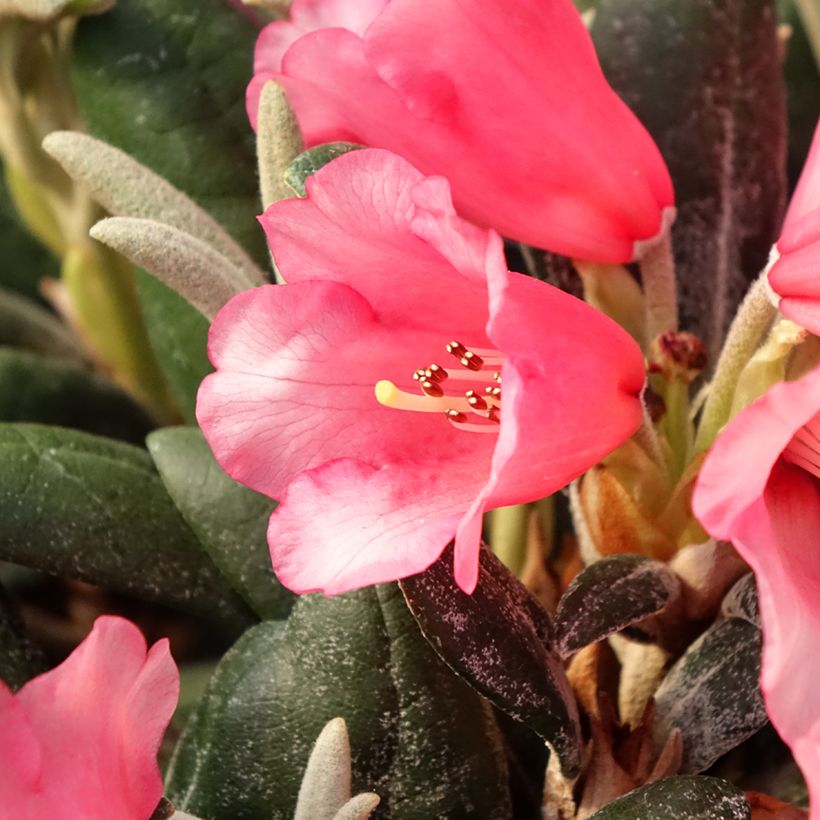

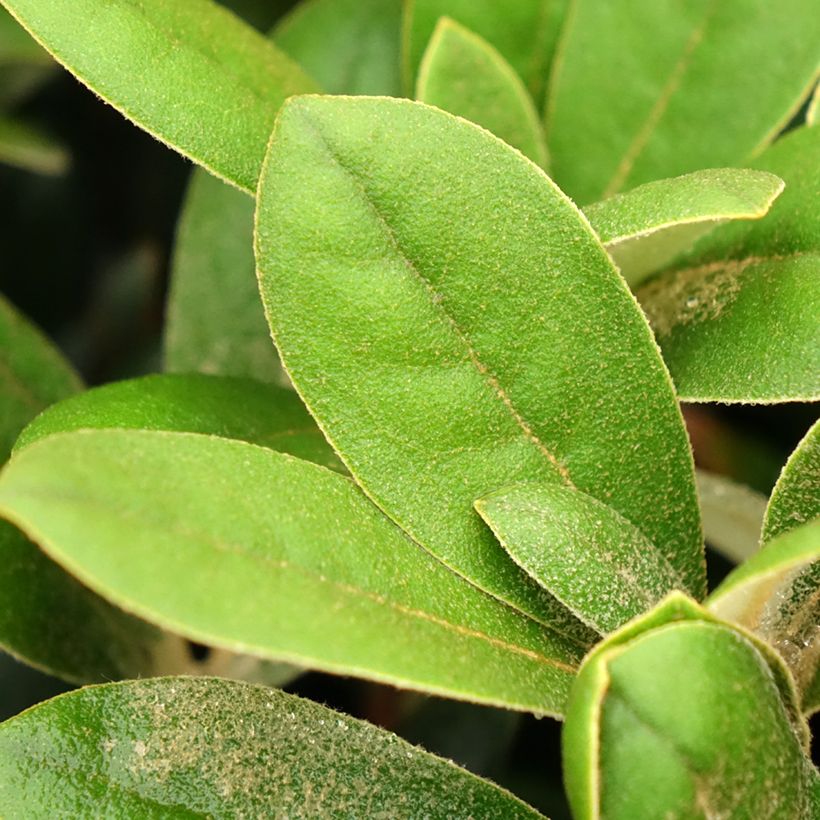

Plant habit
Flowering
Foliage
Botanical data
Rhododendron
yakushimanum
Debbie Dane
Ericaceae
Yaku rhododendron, Yakushima rhododendron
Cultivar or hybrid
Planting and care
Plant Rhododendron 'Debbie Jane' in a partially shaded position, sheltered from cold and drying winds, in moist, humus-bearing, light soil, tending towards acidic (pH between 4.5 and 6). Like all ericaceous soil plants, it does not tolerate calcareous soils, drought, heatwaves or heavy waterlogged soils in winter. If the soil remains moist in summer, this rhododendron will also tolerate non-scorching sun.
Dig a hole three times the volume of the pot. Soak the root ball in water (non-calcareous) and plant the bush at collar level, in a mixture composed of 1/4 peat, leaf mould, gravel or pozzolana, and good soil. Water generously and keep the soil moist in summer. Azaleas and Rhododendrons have a shallow root system. As a result, they are susceptible to long periods of drought. This is why soil enriched with humus and abundant watering during dry spells is recommended. Furthermore, this root system is not very strong, which is why it is essential to lighten heavy soils with draining materials (gravel, pozzolana, clay balls) at planting. Apply a mulch of shredded pine bark at the base of the bush every spring to retain soil moisture while maintaining an acidic pH.
Maintenance consists of removing faded flowers in summer and clearing away dead branches. Azaleas and Rhododendrons can sometimes be attacked by vine weevils that eat the edges of leaves and rootlets, as well as the famous "rhododendron borer," which does not often cause significant damage. Effective organic solutions now exist against vine weevils. Yellowing of the leaves (chlorosis) in Rhododendron indicates poor iron assimilation in the soil and leads to premature death of the plant. While calcareous soil (or watering water) is generally the cause, poorly drained soil or a deeply planted root ball can also explain the phenomenon.
Planting period
Intended location
Care
This item has not been reviewed yet - be the first to leave a review about it.
Similar products
Haven't found what you were looking for?
Hardiness is the lowest winter temperature a plant can endure without suffering serious damage or even dying. However, hardiness is affected by location (a sheltered area, such as a patio), protection (winter cover) and soil type (hardiness is improved by well-drained soil).

Photo Sharing Terms & Conditions
In order to encourage gardeners to interact and share their experiences, Promesse de fleurs offers various media enabling content to be uploaded onto its Site - in particular via the ‘Photo sharing’ module.
The User agrees to refrain from:
- Posting any content that is illegal, prejudicial, insulting, racist, inciteful to hatred, revisionist, contrary to public decency, that infringes on privacy or on the privacy rights of third parties, in particular the publicity rights of persons and goods, intellectual property rights, or the right to privacy.
- Submitting content on behalf of a third party;
- Impersonate the identity of a third party and/or publish any personal information about a third party;
In general, the User undertakes to refrain from any unethical behaviour.
All Content (in particular text, comments, files, images, photos, videos, creative works, etc.), which may be subject to property or intellectual property rights, image or other private rights, shall remain the property of the User, subject to the limited rights granted by the terms of the licence granted by Promesse de fleurs as stated below. Users are at liberty to publish or not to publish such Content on the Site, notably via the ‘Photo Sharing’ facility, and accept that this Content shall be made public and freely accessible, notably on the Internet.
Users further acknowledge, undertake to have ,and guarantee that they hold all necessary rights and permissions to publish such material on the Site, in particular with regard to the legislation in force pertaining to any privacy, property, intellectual property, image, or contractual rights, or rights of any other nature. By publishing such Content on the Site, Users acknowledge accepting full liability as publishers of the Content within the meaning of the law, and grant Promesse de fleurs, free of charge, an inclusive, worldwide licence for the said Content for the entire duration of its publication, including all reproduction, representation, up/downloading, displaying, performing, transmission, and storage rights.
Users also grant permission for their name to be linked to the Content and accept that this link may not always be made available.
By engaging in posting material, Users consent to their Content becoming automatically accessible on the Internet, in particular on other sites and/or blogs and/or web pages of the Promesse de fleurs site, including in particular social pages and the Promesse de fleurs catalogue.
Users may secure the removal of entrusted content free of charge by issuing a simple request via our contact form.
The flowering period indicated on our website applies to countries and regions located in USDA zone 8 (France, the United Kingdom, Ireland, the Netherlands, etc.)
It will vary according to where you live:
- In zones 9 to 10 (Italy, Spain, Greece, etc.), flowering will occur about 2 to 4 weeks earlier.
- In zones 6 to 7 (Germany, Poland, Slovenia, and lower mountainous regions), flowering will be delayed by 2 to 3 weeks.
- In zone 5 (Central Europe, Scandinavia), blooming will be delayed by 3 to 5 weeks.
In temperate climates, pruning of spring-flowering shrubs (forsythia, spireas, etc.) should be done just after flowering.
Pruning of summer-flowering shrubs (Indian Lilac, Perovskia, etc.) can be done in winter or spring.
In cold regions as well as with frost-sensitive plants, avoid pruning too early when severe frosts may still occur.
The planting period indicated on our website applies to countries and regions located in USDA zone 8 (France, United Kingdom, Ireland, Netherlands).
It will vary according to where you live:
- In Mediterranean zones (Marseille, Madrid, Milan, etc.), autumn and winter are the best planting periods.
- In continental zones (Strasbourg, Munich, Vienna, etc.), delay planting by 2 to 3 weeks in spring and bring it forward by 2 to 4 weeks in autumn.
- In mountainous regions (the Alps, Pyrenees, Carpathians, etc.), it is best to plant in late spring (May-June) or late summer (August-September).
The harvesting period indicated on our website applies to countries and regions in USDA zone 8 (France, England, Ireland, the Netherlands).
In colder areas (Scandinavia, Poland, Austria...) fruit and vegetable harvests are likely to be delayed by 3-4 weeks.
In warmer areas (Italy, Spain, Greece, etc.), harvesting will probably take place earlier, depending on weather conditions.
The sowing periods indicated on our website apply to countries and regions within USDA Zone 8 (France, UK, Ireland, Netherlands).
In colder areas (Scandinavia, Poland, Austria...), delay any outdoor sowing by 3-4 weeks, or sow under glass.
In warmer climes (Italy, Spain, Greece, etc.), bring outdoor sowing forward by a few weeks.



































